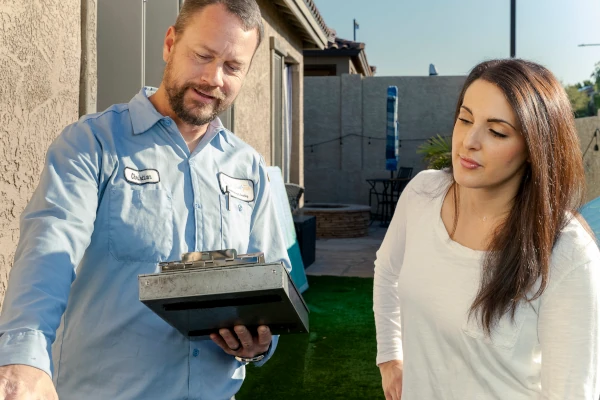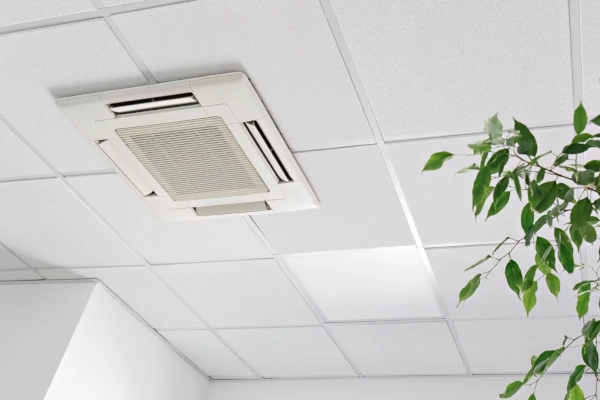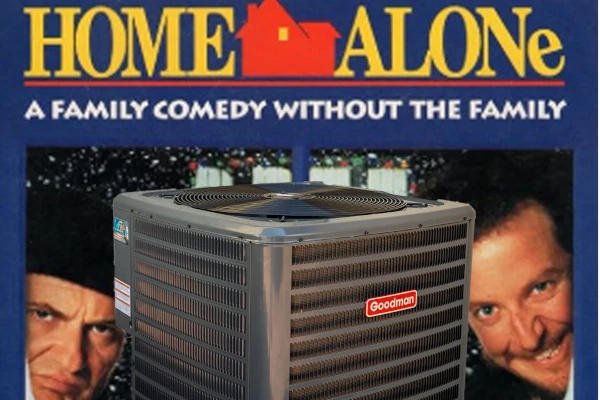improving Indoor air quality plays a crucial role in your overall health and comfort, yet it’s often overlooked. Many homes unknowingly harbor pollutants that contribute to respiratory irritation, allergic reactions, and long-term health concerns. The air inside can sometimes be more contaminated than the air outside—especially in tightly sealed, energy-efficient homes.
Fortunately, there are proven methods to clean and refresh the air you breathe every day. Whether you’re dealing with dust, allergens, or invisible chemical compounds, understanding the sources of indoor pollution and how to mitigate them is the first step toward improving indoor air quality.
Where Do Air Pollutants Come From
Indoor air pollutants come from a variety of everyday sources, often without us realizing it. Over time, these substances can accumulate and compromise the air you breathe, especially in well-sealed homes with limited ventilation. Many of these pollutants are tied to the materials and products we use regularly—and they often release something known as volatile organic compounds (VOCs).
What are VOCs?
Volatile organic compounds (VOCs) are chemicals released as gases from certain solids or liquids. They’re found in many common household products and building materials. As these items age or are used, they emit VOCs into the air—a process called off-gassing—which can significantly impact indoor air quality, especially in enclosed or poorly ventilated spaces.
Items that commonly release VOCs include:
-
Paints and varnishes
-
Carpet and flooring adhesives
-
Plywood and pressed wood furniture
-
Cleaning products and air fresheners
-
Dry-cleaned clothing
-
Glues and craft supplies
-
Personal care products
-
Non-stick cookware coatings

VOCs can cause a range of health issues, from short-term symptoms like headaches and dizziness to long-term effects such as respiratory irritation and increased risk of chronic illness. Children, the elderly, and people with existing health conditions are especially vulnerable. Prolonged exposure in confined spaces can lead to ongoing discomfort and potential health complications.

How Do I Know If My Air is Clean?
Subtle signs of poor indoor air quality often go unnoticed—frequent sneezing indoors but not outside, unexplained fatigue, worsening asthma, or musty smells without visible mold. These might be signs of VOC buildup, inadequate ventilation or a similar air quality issue. A professional can pinpoint sources and recommend courses of action to restore healthy air.
Using Air Filters to Improve Air Quality
Air filters play a vital role in maintaining healthy indoor air by capturing dust, allergens, and airborne particles. However, not all filters are created equal. Basic fiberglass filters, often see-through and inexpensive, offer minimal protection. They primarily protect HVAC equipment from large debris but do little to improve air quality or remove harmful pollutants. These low-efficiency filters allow fine particles, allergens, and even VOCs to continue circulating through your home. As a result, they provide a false sense of security while doing very little to actually clean the air you breathe.
High-efficiency filters, such as pleated models with higher MERV ratings, are much more effective. To learn more about how to choose the right air filter, read our in-depth article on selecting the best filter for your home.
Using high-quality filters can lead to cleaner air, reduced allergy symptoms, and less dust buildup. They also help your HVAC system run more efficiently, potentially extending its lifespan and lowering energy costs. Overall, a good air filter contributes to a healthier, more comfortable living environment.
Air Quality Solutions:
Air Scrubbers
Air scrubbers are advanced devices installed within your home’s HVAC system. They use UV light and specialized filters to neutralize airborne contaminants, including VOCs, bacteria, viruses, and odors. As air passes through the system, it’s actively treated to remove harmful particles, making the indoor environment cleaner and safer to breathe.
These systems are especially effective in homes where chemical pollutants, allergens, or microbes are a concern. Air scrubbers can be a powerful solution for households with pets, asthma sufferers, or anyone sensitive to indoor air quality. Because they treat the air already circulating in your ductwork, they work continuously and efficiently.
Energy Recovery Ventilators (ERVs)
Energy Recovery Ventilators (ERVs) help improve air quality by replacing stale indoor air with fresh outdoor air while maintaining temperature and humidity balance. As air is exchanged, heat and moisture are transferred between incoming and outgoing streams, reducing energy loss and preserving indoor comfort.
ERVs are ideal for tightly sealed homes where natural airflow is limited. They’re particularly useful in newer construction, where energy efficiency often limits ventilation. By continuously cycling out pollutants and bringing in filtered outside air, ERVs help reduce VOC buildup and ensure a steady supply of fresh air throughout the home.

Which is Better for Your Home?
Other Air Quality Control Methods

Source Control
Limiting indoor pollutants starts with reducing their sources. Use low-VOC paints, finishes, and cleaning products. Choose solid wood furniture over pressed wood, and store chemicals in sealed containers away from living areas. Preventing pollutants from entering your home is one of the most effective strategies.
Ventilation
Better ventilation helps dilute indoor pollutants. Use kitchen and bathroom exhaust fans regularly, and open windows when weather allows. Even short periods of fresh air can flush out stale air. In sealed homes, mechanical systems like ERVs provide continuous airflow without compromising energy efficiency or indoor comfort.
Cleaning And Maintenance
Routine cleaning helps control dust, mold, and allergens. Vacuum with a HEPA filter and damp-mop floors to trap fine particles. Replace HVAC filters regularly and clean vents. Managing humidity with a dehumidifier also curbs mold and dust mites, both common and irritating indoor pollutants.
Household Habits
Improving your home’s air quality isn’t just about comfort—it’s an important step toward protecting your health and well-being. From reducing VOCs and upgrading filters to installing systems like air scrubbers and ERVs, there are practical, effective ways to take control of the air you breathe every day.
Even small changes, like adjusting cleaning habits or choosing low VOC emission products, can make a noticeable difference. If you suspect your air quality might be an issue, a professional assessment can uncover hidden problems and guide you toward the right solutions. Clean, healthy air starts with awareness—and leads to a safer, more comfortable home. Please take a look at our air quality services page to see more on what we offer.





